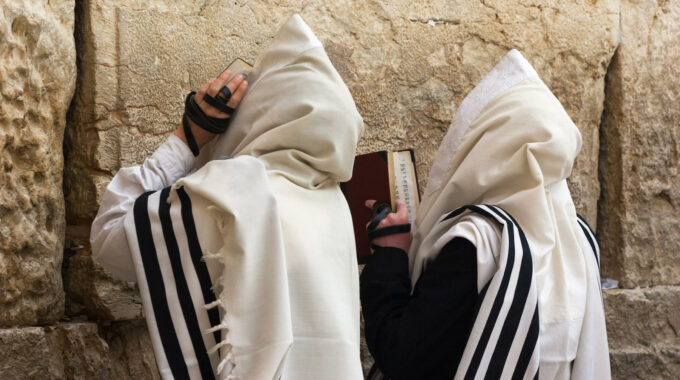Adapted from the writings of Dayan Yitzhak Grossman April 18, 2024 AP News reports: A…

Bais HaVaad on the Parsha, Parshas Acharei Mos-Kedoshim
Sense of Direction
Excerpted and adapted from a shiur by Rav Moshe Yitzchok Weg
April 27, 2023
With this shall Aharon come into the Holy: with a bull, a young male of cattle, for a sin-offering, and a ram for an olah-offering.
Vayikra 15:2
The Gemara (Brachos 30a) says that when reciting Shmoneh Esrei in chutz la’aretz, one should be mechavein his heart toward Eretz Yisrael. If he is in Eretz Yisrael, he should be mechavein his heart toward Yerushalayim. If he is in Yerushalayim, he should be mechavein his heart toward the Bais Hamikdash, and in the Bais Hamikdash itself, he should be mechavein his heart toward the Kodesh Hakadashim.
Rabeinu Yonah says that even someone standing in chutz la’aretz should be mechavein his heart toward the Kodesh Hakadashim. However, it is difficult to face the Kodesh Hakadashim precisely while standing in chutz la’aretz, so the Shulchan Aruch (94:1), who accepts Rabeinu Yonah’s view, writes that a person in chutz la’aretz should turn his face toward Eretz Yisrael and be mechavein his heart toward Yerushalayim, the Bais Hamikdash, and the Kodesh Hakadashim. The Mishnah Brurah explains that since it is difficult for someone in chutz la’aretz to face Yerushalayim precisely, he should imagine himself standing in the Kodesh Hakadashim.
The Rambam (Tefilah 5:1,3) disagrees with Rabeinu Yonah and only requires a person in chutz la’aretz to turn his face towards Eretz Yisrael, not to turn toward or have kavanah for Yerushalayim or the Bais Hamikdash. According to the Rambam, kavanah cannot replace physical turning.





